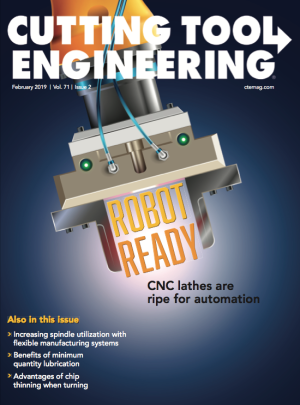Minimum quantity lubrication offers a clear advantage compared with conventional metalworking fluids. Oil quantity, volumetric flow rate and pressure of the MQL aerosol may be taken directly into account in the digital process chain. Furthermore, the optimal combination of MQL oil and tooling increases productivity and lengthens tool life.
To be sure, metalworking fluids and MQL are complex issues. Regardless of the method used, the basic objectives of the metalcutting industry are high process reliability and high productivity. In addition to the economic ramifications, ecological aspects play an increasingly important role, offering potential savings in energy and other resources.
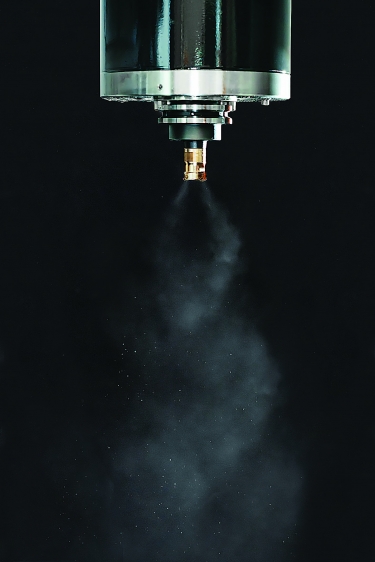
Figure 1. Good spraying behavior for an MQL system.
All metalworking fluid-related lubrication approaches, including MQL, have a common characteristic: continuous targeted feeding of fluid into the cutting zone. The fluid must be delivered accurately onto the rake angle and flank face of the cutting tool to deliver optimal results, which can best be achieved by means of an internal metalworking fluid supply.
MQL Processes and Advantages
MQL creates an aerosol composed of an oil-air mixture that forms a protective film, which reduces friction and tool wear. The cutting tool is cooled by forced convection via compressed air, wet surfaces and evaporation enthalpy.
Processes such as high-speed cutting or high-feed machining are fundamental prerequisites for cutting successfully with MQL. An MQL-optimized cutting process requires smaller, constant wrap angles to reduce the total heat input into the tool.
Compared with wet machining, MQL is more flexible because smaller amounts of fluid are applied. However, due to this reduction of fluid, it is imperative to pay close attention to the continuous targeted feeding of the cutting tool with the MQL aerosol. Low energy consumption and cleanliness of the parts and chips, as well as effective material compatibility, are further advantages of this method.
MQL and modern MQL systems can be integrated into the digital process chain more easily and quickly than conventional metalworking fluids. Regular measurement of the various parameters—such as concentration and pH value—becomes unnecessary. MQL normally involves using neat oil; therefore, detecting impurities and particle sizes poses few problems.
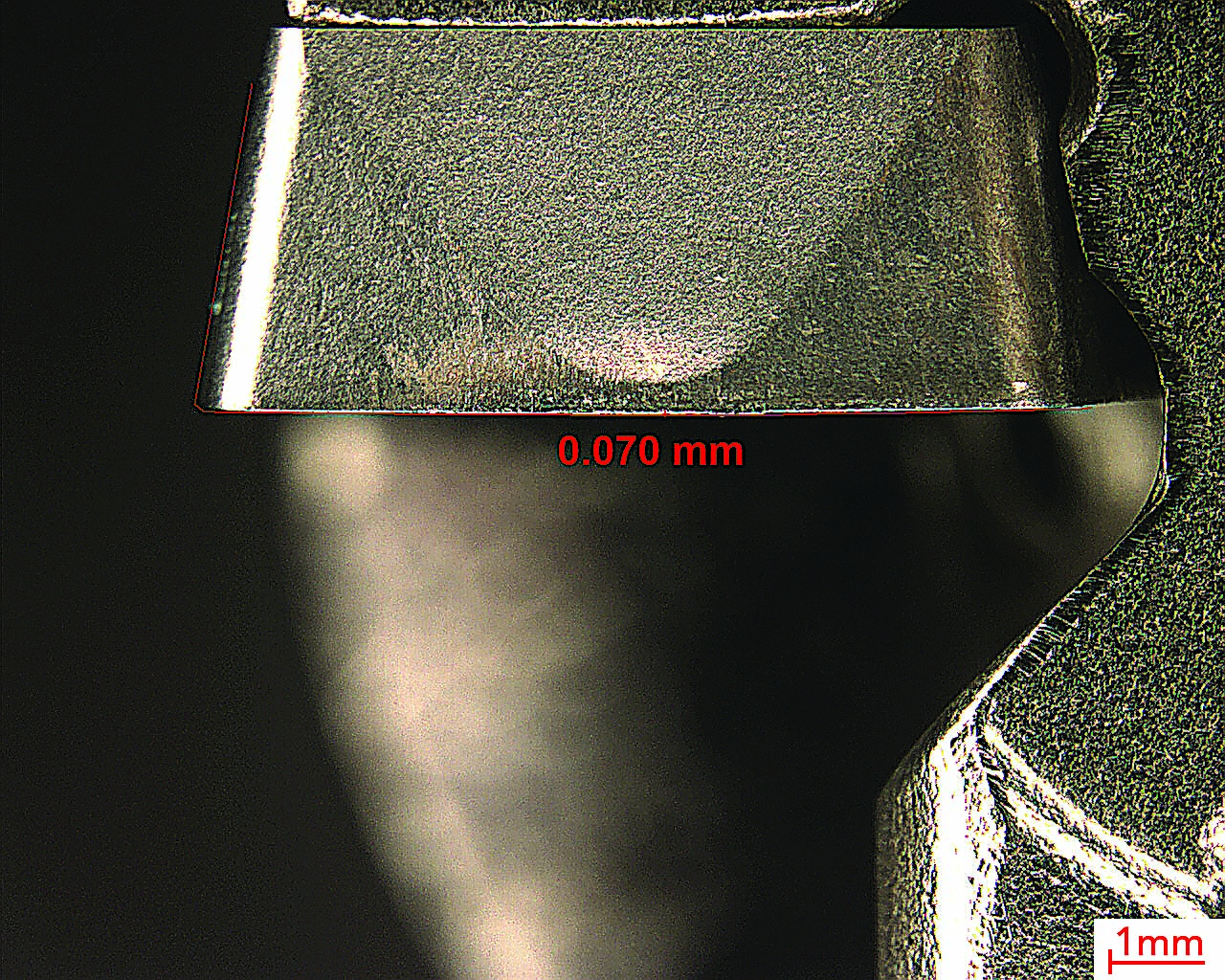
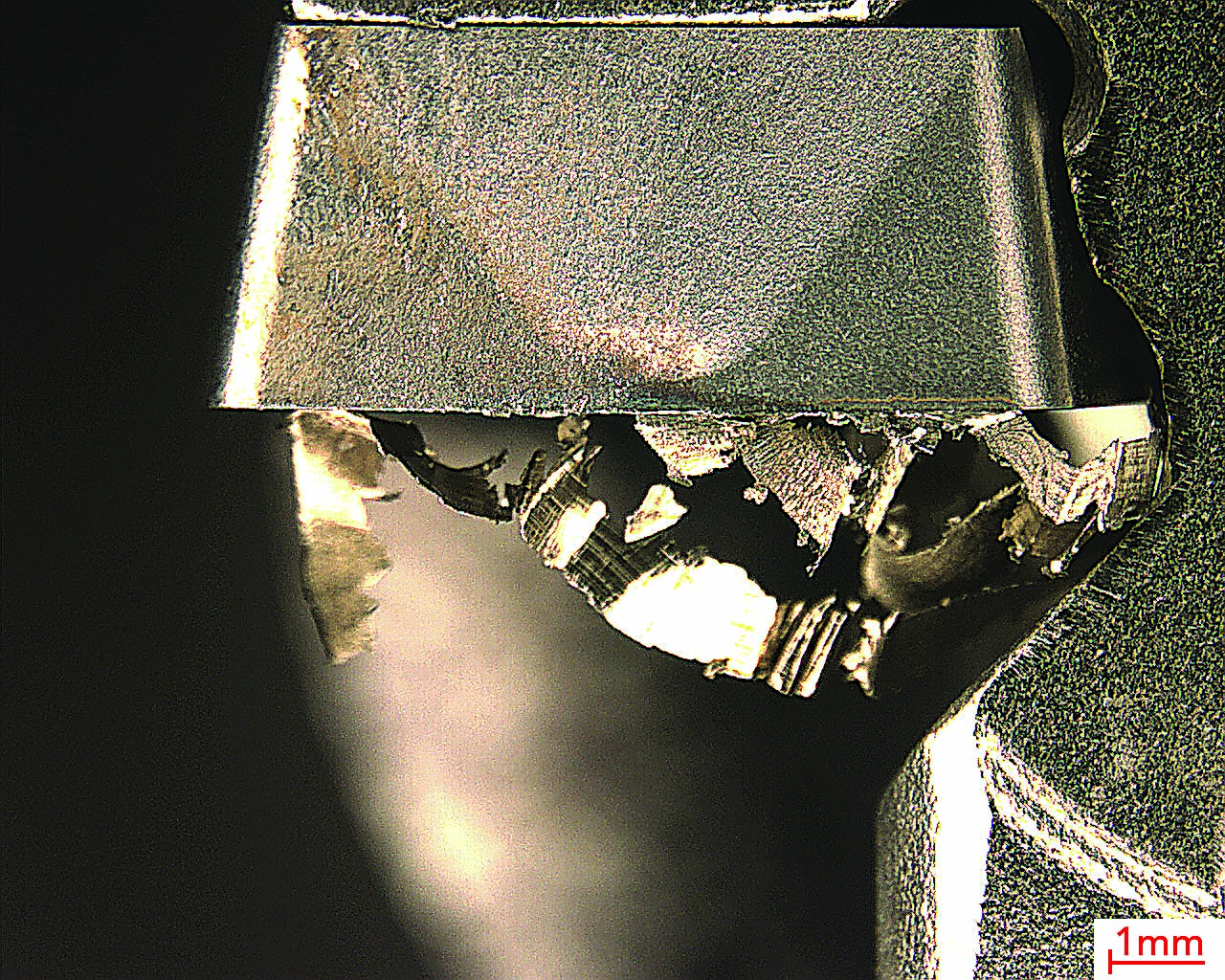
Figure 2. MQL effectively prevents built-up edge (this page) compared with dry machining.
In the course of MQL machining, the amount of both the oil fed and the compressed air used (volumetric flow and pressure) is recorded in MQL systems. This data can be linked directly to the product and process data in the digital process chain. Thus, at the desired time, all essential process variables—from the cutting tool and machine tool to the feed, speed and lubricant supply—can be monitored.
Considerations such as compressed air consumption and associated power consumption can be adjusted and estimated, according to researcher and author Ivan Iovkov. Although aerosol quality and oil fraction measurement during nozzle discharge are complex tasks, they can be addressed with a unique subjective adjustment by the machine operator for the respective tool.
The following example of high-feed cutting of stainless steel shows the potential benefits of an MQL strategy exceptionally well.
Optimization Using MQL
Until recently, 304L stainless steel primarily had been machined dry. The aim of a project at the technology center of Blaser Swisslube AG, Hasle-Rüegsau, Switzerland, was to add value by optimizing the process with MQL. The first step was to compare various cutting tools and MQL products manufactured by Blaser Swisslube. Subsequently, different processes were evaluated for the best tool size and the best MQL oil. An overall view of the entire process is essential for optimal MQL machining. This includes the MQL device itself and the aerosol, as well as preparation and delivery.
Tools must be properly designed from the start for MQL delivery. Only when a constant, consistent aerosol with effective spray behavior is generated at the tool discharge nozzle can improvements be successfully implemented ( Figure 1).
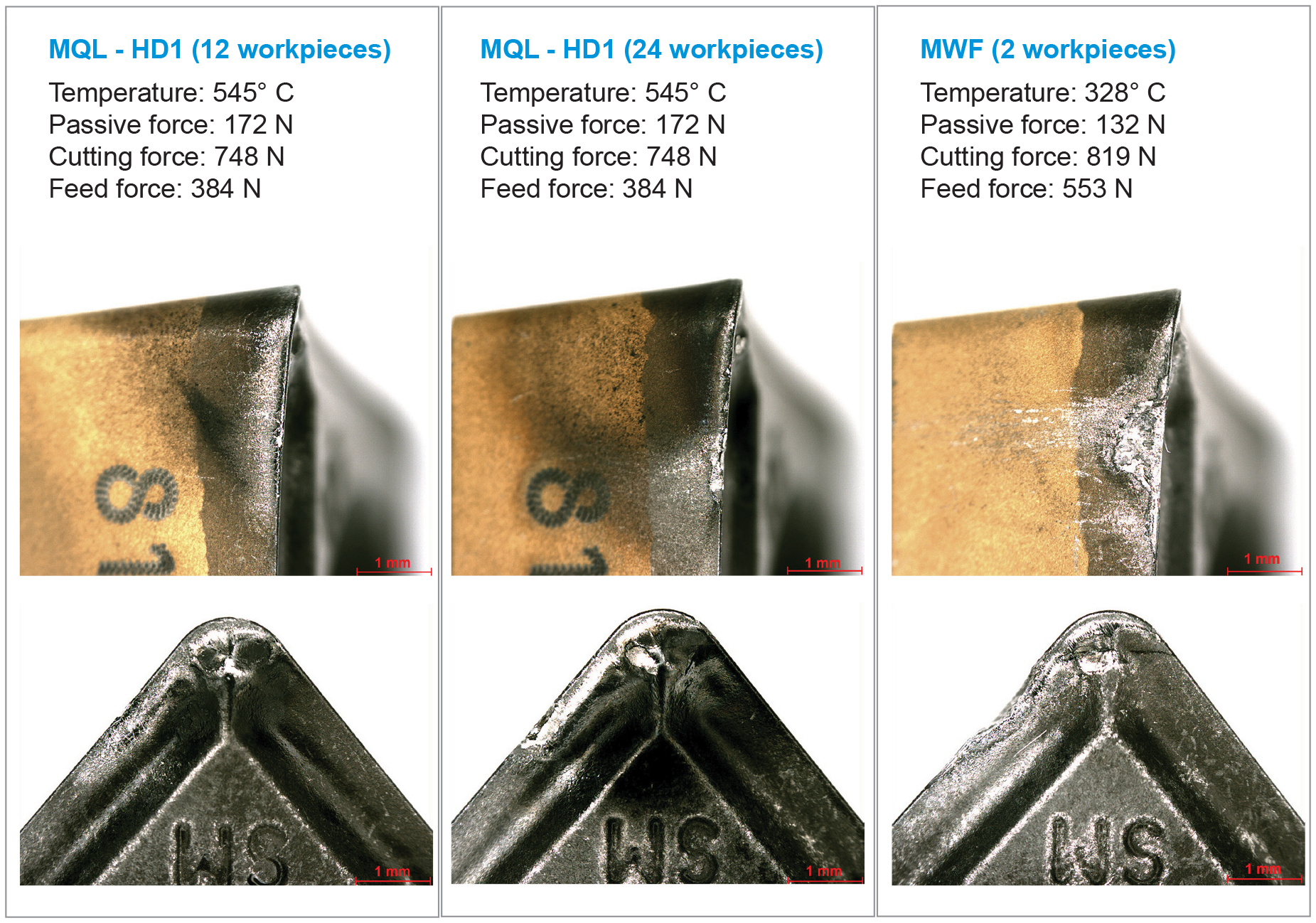
Figure 3. MQL machining in the case of 12 or 24 workpieces versus wet machining two workpieces when turning 304L stainless steel with a low nickel content.
During the test, the MQL product Vascomill MMS FA2 showed impressive performance and helped increase tool life by 243 percent. The product also enabled the feed rate and the cutting speed to be increased, contributing to a total productivity increase of more than 70 percent. The cutting speed went from 426 sfm to 1,279 sfm. Furthermore, the optimal MQL strategy prevented built-up edge on the cutting edge (Figure 2).
Because heat can dissipate easily through the chip, materials such as aluminum alloys, conventional steel and stainless steel offer high potential for success with MQL machining. This is extremely relevant for the aerospace industry, in which Blaser Swisslube is working with two renowned customers in Asia and Europe.
In the field of turbocharger production, in collaboration with a global market leader, tool life increased by a factor of up to 12 when using MQL compared with conventional metalworking fluids (Figure 3). This is because the brittle and hard carbide indexable inserts react to the change in temperature during wet machining, also known as thermal shock. Furthermore, conventional coolant machining requires ductile inserts and coatings.
These are some of the advantages of MQL machining.
Contact Details
Related Glossary Terms
- alloys
alloys
Substances having metallic properties and being composed of two or more chemical elements of which at least one is a metal.
- aluminum alloys
aluminum alloys
Aluminum containing specified quantities of alloying elements added to obtain the necessary mechanical and physical properties. Aluminum alloys are divided into two categories: wrought compositions and casting compositions. Some compositions may contain up to 10 alloying elements, but only one or two are the main alloying elements, such as copper, manganese, silicon, magnesium, zinc or tin.
- built-up edge ( BUE)
built-up edge ( BUE)
1. Permanently damaging a metal by heating to cause either incipient melting or intergranular oxidation. 2. In grinding, getting the workpiece hot enough to cause discoloration or to change the microstructure by tempering or hardening.
- coolant
coolant
Fluid that reduces temperature buildup at the tool/workpiece interface during machining. Normally takes the form of a liquid such as soluble or chemical mixtures (semisynthetic, synthetic) but can be pressurized air or other gas. Because of water’s ability to absorb great quantities of heat, it is widely used as a coolant and vehicle for various cutting compounds, with the water-to-compound ratio varying with the machining task. See cutting fluid; semisynthetic cutting fluid; soluble-oil cutting fluid; synthetic cutting fluid.
- cutting speed
cutting speed
Tangential velocity on the surface of the tool or workpiece at the cutting interface. The formula for cutting speed (sfm) is tool diameter 5 0.26 5 spindle speed (rpm). The formula for feed per tooth (fpt) is table feed (ipm)/number of flutes/spindle speed (rpm). The formula for spindle speed (rpm) is cutting speed (sfm) 5 3.82/tool diameter. The formula for table feed (ipm) is feed per tooth (ftp) 5 number of tool flutes 5 spindle speed (rpm).
- feed
feed
Rate of change of position of the tool as a whole, relative to the workpiece while cutting.
- metalcutting ( material cutting)
metalcutting ( material cutting)
Any machining process used to part metal or other material or give a workpiece a new configuration. Conventionally applies to machining operations in which a cutting tool mechanically removes material in the form of chips; applies to any process in which metal or material is removed to create new shapes. See metalforming.
- metalworking
metalworking
Any manufacturing process in which metal is processed or machined such that the workpiece is given a new shape. Broadly defined, the term includes processes such as design and layout, heat-treating, material handling and inspection.
- rake
rake
Angle of inclination between the face of the cutting tool and the workpiece. If the face of the tool lies in a plane through the axis of the workpiece, the tool is said to have a neutral, or zero, rake. If the inclination of the tool face makes the cutting edge more acute than when the rake angle is zero, the rake is positive. If the inclination of the tool face makes the cutting edge less acute or more blunt than when the rake angle is zero, the rake is negative.
- turning
turning
Workpiece is held in a chuck, mounted on a face plate or secured between centers and rotated while a cutting tool, normally a single-point tool, is fed into it along its periphery or across its end or face. Takes the form of straight turning (cutting along the periphery of the workpiece); taper turning (creating a taper); step turning (turning different-size diameters on the same work); chamfering (beveling an edge or shoulder); facing (cutting on an end); turning threads (usually external but can be internal); roughing (high-volume metal removal); and finishing (final light cuts). Performed on lathes, turning centers, chucking machines, automatic screw machines and similar machines.



